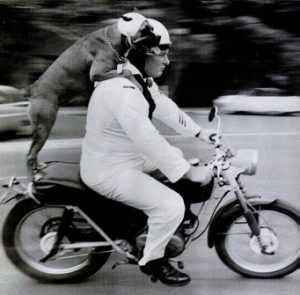Plundering the (Virtual) Shelves of Mugar
Ahoy, Matey! We pirates be a greedy bunch, and there are books aplenty at Mugar—and many of them are available online!
But don’t weigh yourself down with leaden coins. Many a book bears a promising title but turns out, upon inspection, to focus on matters irrelevant to your inquiry. So sit yourself down under the light of Mugar’s many lamps and crack open each of your books to see what lies therein. Then, if the book is indeed of use, turn it to further use by trawling through its notes and bibliography for leads on other books you might find and plunder.
Remember that your focus here is historical: you’re looking to learn the history of an movement or idea. That may be easy for some topics—the history of the 1960s Civil Rights Movement, for example, has been extensively documented. By contrast, there are lots of books on dinosaurs, but few (none?) on the history of dinosaurs as a cultural phenomenon. If you can’t find a book with a focus that’s exclusively historical, however, you may be able to find some that discuss the topic’s history in the introduction or in early chapters. So it’s really important that you crack the covers on your books before you check them out of the library: read the table of contents and skim through the introduction and several chapters to get a sense of what’s on offer here. What approach does the author take to the topic? Does the book adopt a historical perspective at some point, attempting to explain the present by reference to the past? If so, you have a source worth your while.
Research Findings Create a Google Doc for publishing your research findings:
- Go to docs.google.com
- Make sure you’re logged in to your bu.edu google account. (This will facilitate sharing, below.)
- Start a New Document
- Click on Share, then under “Get Link” choose the “Boston University” option.
- Copy link, then add the link to your post on this website on the Topics for Unit Three page.
In the coming weeks, you’ll be using this Google Doc to keep a record of your research findings. This will provide your classmates access to the fruits of your research, and it will make it easier for you and I to confer during office hours.
For today, paste a list of 3 single-author books you think look interesting formatted Author, Title, Year, Link. The link you’re looking for is the one that the library website displays after you’ve clicked a green “Online Access Available” link. It might be labelled Jstor or Proquest Ebook Central. In your Google Doc, format the link as an embedded link, rather than as a long text string. Skip two lines between entries.
After you’ve done all that, make a screenshot of the table of contents for the book that strikes you as most promising, and upload the screenshot in a comment, below, along with two sentences describing what this book is about and why you want to read it.
Reading
Michael Gerson, “The Last Temptation,” an article from the current issue of The Atlantic magazine. Gerson offers an example of a writer seeking a deeper understanding of a present-day phenomenon by studying its past.
As you read, note moments where Gerson surprises you. Type one such quotation in as a comment, below. If someone else has already put up the quote you were planning, write a reply commenting on what made that moment in the essay surprise you. In particular, what’s Gerson doing, as a writer, to engage his readers in this way?
 Examine the linked clippings, a collection I assembled several years ago when teaching a research course centered on 1950s America. It contains every mention of the word “motorcycle” in the pages of Life from 1947-1962.
Examine the linked clippings, a collection I assembled several years ago when teaching a research course centered on 1950s America. It contains every mention of the word “motorcycle” in the pages of Life from 1947-1962.